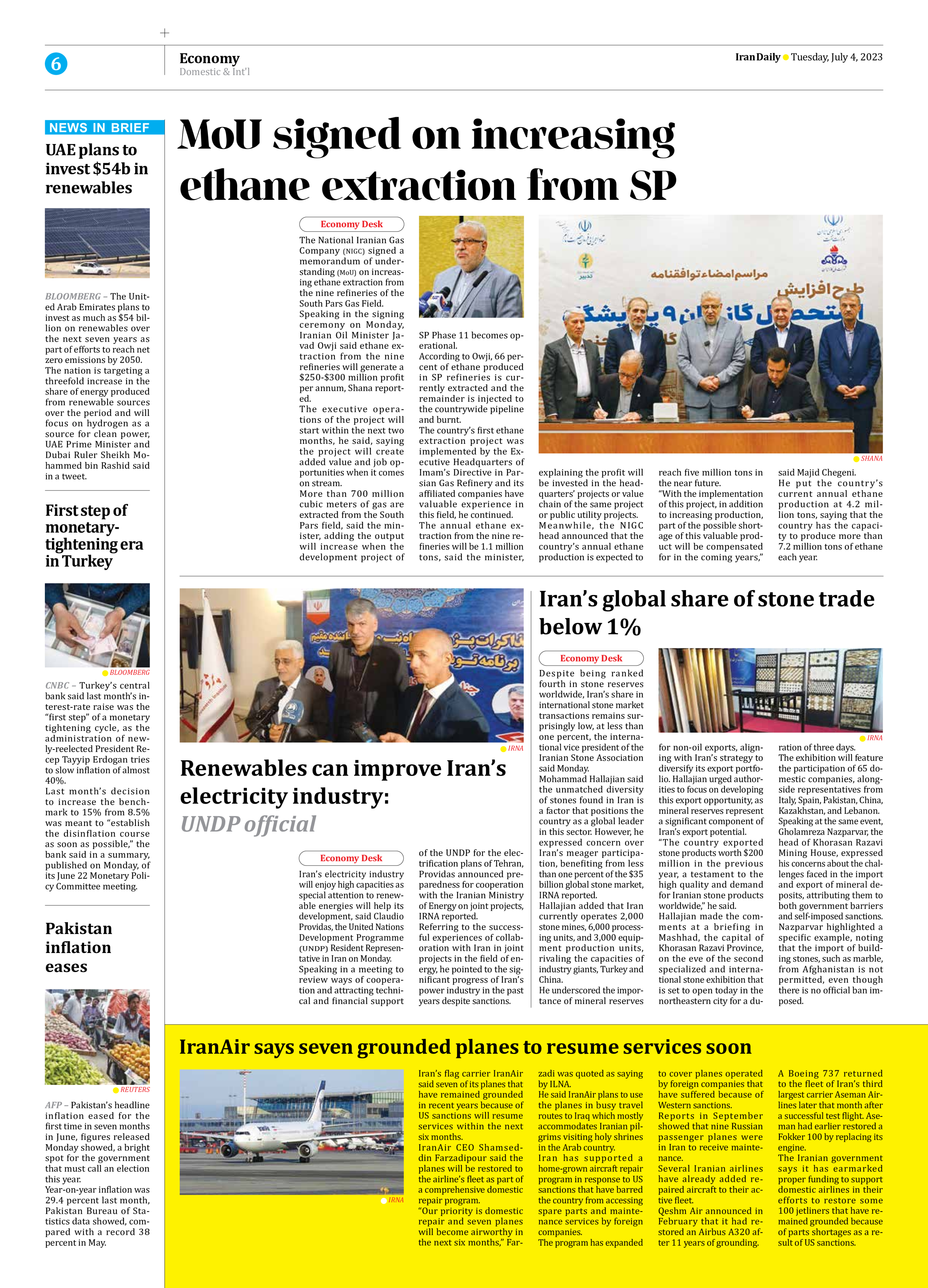
Iran’s global share of stone trade below 1%
Despite being ranked fourth in stone reserves worldwide, Iran’s share in international stone market transactions remains surprisingly low, at less than one percent, the international vice president of the Iranian Stone Association said Monday.
Mohammad Hallajian said the unmatched diversity of stones found in Iran is a factor that positions the country as a global leader in this sector. However, he expressed concern over Iran’s meager participation, benefiting from less than one percent of the $35 billion global stone market, IRNA reported.
Hallajian added that Iran currently operates 2,000 stone mines, 6,000 processing units, and 3,000 equipment production units, rivaling the capacities of industry giants, Turkey and China.
He underscored the importance of mineral reserves for non-oil exports, aligning with Iran’s strategy to diversify its export portfolio. Hallajian urged authorities to focus on developing this export opportunity, as mineral reserves represent a significant component of Iran’s export potential.
“The country exported stone products worth $200 million in the previous year, a testament to the high quality and demand for Iranian stone products worldwide,” he said.
Hallajian made the comments at a briefing in Mashhad, the capital of Khorasan Razavi Province, on the eve of the second specialized and international stone exhibition that is set to open today in the northeastern city for a duration of three days.
The exhibition will feature the participation of 65 domestic companies, alongside representatives from Italy, Spain, Pakistan, China, Kazakhstan, and Lebanon.
Speaking at the same event, Gholamreza Nazparvar, the head of Khorasan Razavi Mining House, expressed his concerns about the challenges faced in the import and export of mineral deposits, attributing them to both government barriers and self-imposed sanctions.
Nazparvar highlighted a specific example, noting that the import of building stones, such as marble, from Afghanistan is not permitted, even though there is no official ban imposed.







